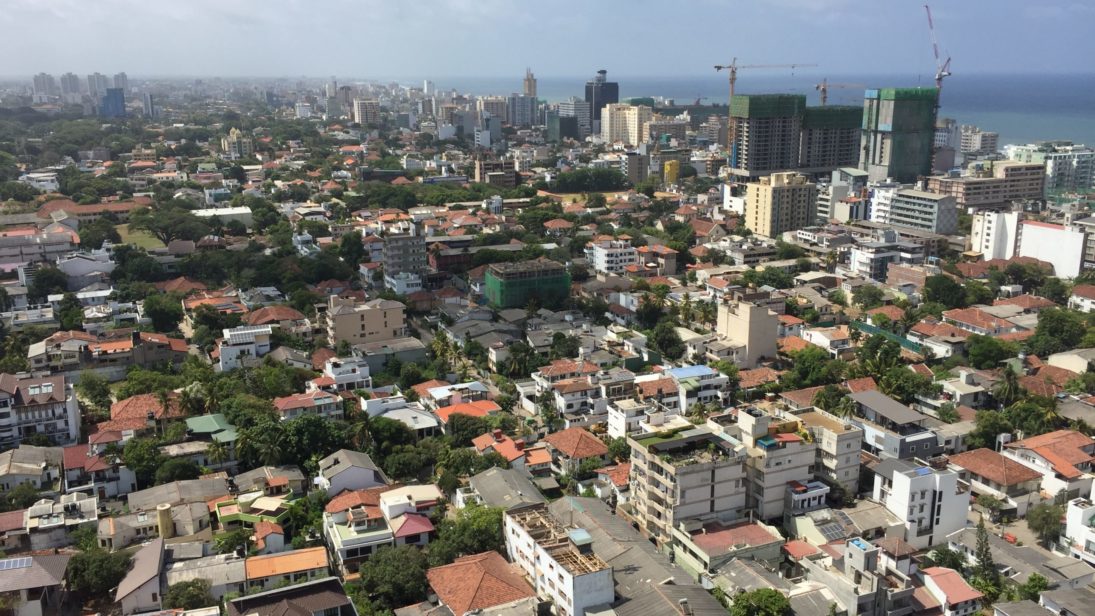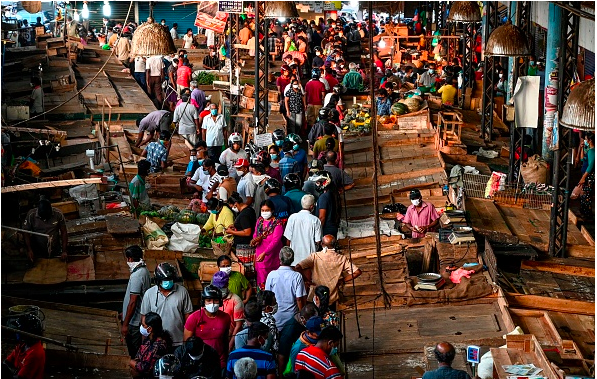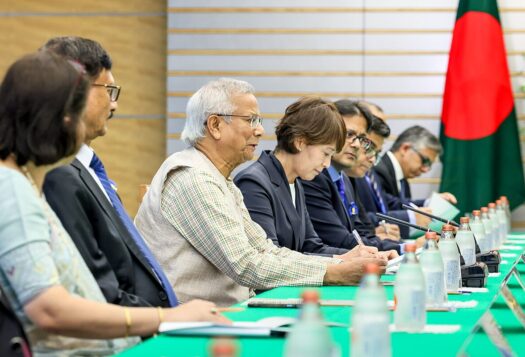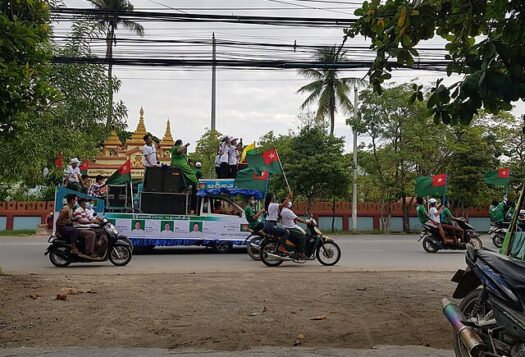
Sri Lanka acted reasonably early in response to the COVID-19 pandemic and has thus far been somewhat successful in containing a potential outbreak within the country. As of April 6, Sri Lanka has 135 active cases (178 total cases) and 5 deaths. In the absence of wide testing, however, it is difficult to assess the exact nature of the pandemic in the country. Over the course of the past week, several possible cases of community spread have been identified. The pandemic comes at a politically and economically sensitive time for the country. President Gotabaya Rajapaksa’s decision to dissolve parliament in early March and the eventual election postponement have generated political uncertainty. As the country manages a narrow fiscal space and heavy debt burden, as well as low growth and the closure of the tourism sector, the pandemic is also likely to hit the economy hard.
Situation Overview
As the country manages a narrow fiscal space and heavy debt burden, as well as low growth and the closure of the tourism sector, the pandemic is also likely to hit the economy hard.
From early January until mid-March, the government’s response to COVID-19 was almost exclusively geared towards screening inward passengers at the border and quarantining tourists with symptoms. The most stringent border control measures were taken when all incoming passengers from Italy, South Korea, and Iran were quarantined for two weeks in government centers. This was extended to a ban on incoming flights a week later. Notably, however, Defense Secretary Kamal Gunaratne revealed that hundreds of Sri Lankans returning from Italy and South Korea had evaded the quarantine requirement. In fact, many of the initial patients who tested positive for COVID-19 were returnees from Italy or South Korea, or had been exposed to returnees.
The nature of the government response shifted rapidly as several locals were infected with COVID-19. Following the absence of any meaningful measures on social distancing prior to mid-March, the government declared a four-day public holiday. This transformed into a curfew in specific regions of the country, and ultimately to a nationwide curfew on March 20. The country has since remained under curfew, with the government announcing extensions in one-week intervals. While public exposure may have reduced drastically during the curfew period, the absence of a clear timeline and sporadic breaks in curfew have led to instances of panic-buying and over-crowding, undermining social distancing measures. Five urban districts—Colombo, Gampaha, Kalutara, Kandy, and Jaffna—have since been identified as high-risk and placed under indefinite curfew.
Political Backdrop
The pandemic hit Sri Lanka during a particularly critical political moment as the president dissolved parliament six months before the conclusion of its term on March 3 and called for an election to be held on April 25. The president resisted calls to reconvene parliament, as election campaigning continued amidst calls for social distancing. Ultimately, the Election Commission postponed the election once nominations had been submitted and parliament remained dissolved. Currently, the country is operating mainly under emergency and interim powers vested in the president. Crucially, Prime Minister Mahinda Rajapaksa’s minority government, in place since the presidential election in November, failed to pass a supplementary budget in February due to majority opposition against increasing the debt-ceiling. Therefore, the government has parliamentary approval for expenses only until April 30.
These developments have created opposing views regarding the president’s power to manage public expenses beyond April, especially salient as it responds to the current crisis. The Pre-Election Budgetary Position Report issued by the president on March 23 indicates a Consolidated Fund for a three month period starting on March 6, three days after parliament dissolution. However, constitutional scholars suggest that the president does not possess this power and will be required to recall parliament to pass a Vote on Account to manage expenses beyond April. Several party leaders in the opposition have also called for parliament to be reconvened in order to increase the nation’s debt ceiling, part of a plan to provide critical economic stimulus packages in response to the crisis.

Economic Outlook
Political developments—including the suspension of parliament ahead of a planned election—have created opposing views regarding the president’s power to manage public expenses beyond April, especially salient as it responds to the current crisis
While the government’s priority at the moment is addressing the public health imperatives of COVID-19, Sri Lanka is already facing severe economic hardships because of the effective stagnation of meaningful economic activity in the country. This economic situation is likely to worsen in the future in the event of a global recession. Significant restrictions in international travel are affecting the country’s manufacturing sector and its tourism sector, which is still recovering from last year’s Easter Sunday attacks.
The government has adopted several measures to ease the burden on the public, with an emphasis on aiding low-income households. Among other programs, the government has introduced price reductions of some essential goods, debt moratoriums, and tax relief measures. The Central Bank has increased liquidity in the financial system. In addition, the government announced it would provide an allowance of approximately USD $25 to low income and vulnerable families and individuals.
Currently, daily wage earners and micro, small and medium enterprises (MSMEs) are particularly affected due to a lack of economic activity and liquidity restrictions. MSMEs account for 52 percent of total GDP and 45 percent of national employment. Meanwhile, nearly half of the population is employed in the non-agricultural informal sector. The government allowance will likely ease some pressures on these vulnerable groups. In the midst of continuous curfews or lockdowns, however, a broader stimulus package and mechanism to create an income flow will be necessary. The government must also provide financing to firms to keep them afloat and minimize job losses. In the absence of an effective economic strategy, the country will likely face a cascade of business closures, high unemployment, and high rates of default, leading to a domestic financial crisis.
The Sri Lankan government will be required to design effective fiscal stimulus packages while navigating a very narrow fiscal space. The country is already facing a significant fiscal burden and an unprecedentedly high level of debt-repayment during the next three years. An expected decline in demand for Sri Lankan exports, disruptions to supply chains, a potential fall in FDI, as well as continued stagnation of domestic economic activities will place an even larger burden on government finances.
Conclusion
Sri Lanka has a relatively strong public health system and has done an admirable job in responding to the current crisis thus far. However, Sri Lanka is also home to a rapidly ageing population with the elderly accounting for 12.4 percent of the total population and has limited resources financially. An outbreak of COVID-19 could have catastrophic consequences. Unlike many developed and some developing countries, Sri Lanka does not have adequate resources to expand testing for COVID-19 and there is limited public information on the total number of tests conducted. As a result, authorities are attempting to stop the spread through stringent social distancing measures, primarily through curfews, and tracing and isolating those who have come into contact with those that have tested positive. If Sri Lanka succeeds in navigating through this public health crisis, it will be significant achievement for its public health infrastructure. Yet, as it addresses these public health imperatives, the government will necessarily also be balancing the country’s tenuous political situation and its efforts to minimize economic losses.
Editor’s Note: SAV contributors analyze how governments in the region are responding to the spread of COVID-19, as well as the potential far-reaching economic and security impacts of the pandemic. Read the entire series here.
***
Image 1: Hector Lo via Flickr
Image 2: AFP via Getty Images


